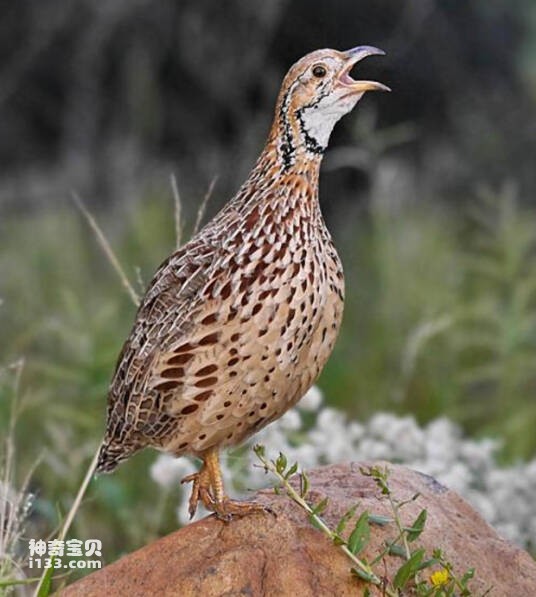Scleroptila gutturalis
IUCN
LCBasic Information
Scientific classification
- name:Scleroptila gutturalis
- Scientific Name:Scleroptila gutturalis,Orange River Francolin
- Outline:Landfowl
- Family:Chickeniformes P.family R.Partridge
Vital signs
- length:32-35cm
- Weight:340-538g
- lifetime:No textual research information is available
Feature
The adult bird has colored stripes on both sides of the head and neck, and the cloth has small black and white spots
Distribution and Habitat
It is found in Angola, Botswana, Eritrea, Ethiopia, Kenya, Lesotho, Namibia, Somalia, South Africa, South Sudan, Sudan, Uganda.
It is found in wide areas of grassland and forest. It lives on sparsely vegetated hillsides, in thin grassy areas and shrubs between rocks.
Appearance
The Orange River Partridge is 32-35 cm long and weighs 340-538 grams. Feather base color is light yellow, lower body light yellow. Eyes brown, legs dark yellow. Both sexes are the same. Males have a distance. The adult bird has a beautiful head and neck on both sides, with ribbon-colored stripes extending from the eyes to the sides of the neck, covered with small black and white spots. The throat is white with a black border that forms a bib directly above the chest. The chest and lower body have many brown spots and stripes, which develop into the sides in various forms.
Nevertheless, central and northern Botswana, the Namibian subspecies, exhibit a clear sandy color on the head and underbody. The subspecies from northern Namibia and Angola has a fairly developed black and white breast band. All populations have taupe tops with brown spots and black stripes. The outer wings of the primary and secondary flight feathers are bright red with faint gray-brown tips. The tail is grayish-b
Details
The Orange River Partridge (Scleroptila gutturalis) is known as Orange River Francolin and has four subspecies.

The Orange River ringnecked partridge is a land bird and can live in colonies of up to 10-12 individuals. Flies fast when in danger, but usually runs around in panic. Forage for insects and plant seeds on the ground, feeding on plant bulbs and bulbs, falling seeds and fruits, weeds, roots, seeds, young leaves and crops, as well as insects such as grasshoppers and beetles, and invertebrates.
The Orange River Ringnecked partridge is monogamous and the breeding season varies from species to species, generally during the dry season following the rainy season. The nest is built in the ground, hidden in dense grass, with a simple depression. Each clutch lays 3-8 eggs, which are pale pink or yellowish-brown, sometimes with small brown spots. Given the size of the range, the timing of the breeding season varies regionally, from February to May in Namibia and from September to October in the Transvaal; In Namibia it is June; In Angola they are April, August and December; In Ethiopia they are February, April and August; In Somalia it is May-June.
Listed on the International Union for Conservation of Nature (IUCN) 2016 Red List of Threatened Species ver 3.1 - Not Threatened (LC).
Protect wild animals and eliminate wild meat.
Maintaining ecological balance is everyone's responsibility!








